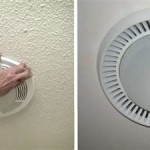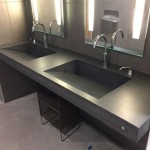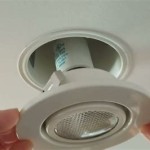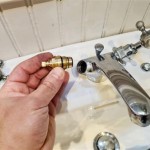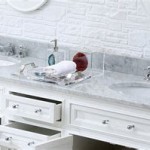How To Prep Bathroom Walls For Painting
Painting bathroom walls requires thorough preparation due to the room's high humidity levels. Proper preparation ensures the paint adheres correctly, resulting in a durable and aesthetically pleasing finish. Skipping or rushing this crucial step can lead to peeling paint, mildew growth, and an uneven finish. This guide provides a detailed approach to prepping bathroom walls for painting.
Clean the Walls
Cleaning the walls is the first step in preparing them for paint. This process removes dirt, grime, mildew, and soap scum, all of which can interfere with paint adhesion. Using appropriate cleaning solutions and methods guarantees a clean surface for the paint to bond with.
- Use a mild detergent solution and a sponge or cloth to wash the walls thoroughly.
- Pay close attention to areas prone to mildew, such as corners and around fixtures.
- For stubborn mildew stains, a mixture of bleach and water (1:3 ratio) can be applied. Always test this solution in an inconspicuous area first.
- Wear appropriate protective gear, including gloves and eye protection, when using bleach.
- Rinse the walls thoroughly with clean water after cleaning and allow them to dry completely.
Repair any Damage
Imperfections in the wall surface, such as cracks, holes, or peeling paint, need to be addressed before painting. Ignoring these issues will result in a flawed finish and compromise the paint's longevity. Proper repair ensures a smooth and uniform surface for optimal paint application.
- Scrape off any loose or peeling paint using a paint scraper.
- Fill small holes and cracks with spackling compound, allowing it to dry completely before sanding smooth.
- For larger holes, consider using patching compound or drywall repair kits. Follow the manufacturer's instructions for optimal results.
- Sand the repaired areas smooth with fine-grit sandpaper, ensuring a seamless transition with the surrounding wall.
Remove Glossy Surfaces
Glossy surfaces can hinder paint adhesion. Deglossing these areas creates a slightly roughened surface that provides better grip for the new paint. This is especially important for previously painted walls with a high-gloss finish.
- Lightly sand glossy surfaces with fine-grit sandpaper to create a better surface for paint adhesion.
- Alternatively, use a liquid deglosser, following the manufacturer’s instructions carefully.
- After sanding or deglossing, thoroughly clean the walls to remove any dust or residue.
Protect Fixtures and Trim
Protecting bathroom fixtures and trim from paint splatter is crucial for a clean and professional finish. This preventative step saves time and effort in cleanup and ensures the focus remains on painting the walls effectively.
- Cover fixtures such as faucets, showerheads, and towel bars with painter's tape and plastic sheeting.
- Mask off baseboards, window trim, and door frames with painter's tape for clean lines.
- Drop cloths or old sheets can be used to protect the floor from drips and spills.
Prime the Walls
Priming the walls is a crucial step, especially in bathrooms, where moisture and temperature fluctuations can affect paint adhesion. Primer seals the surface, creating a uniform base for the paint to adhere to, and ensures even color and coverage.
- Apply a mildew-resistant primer specifically designed for bathrooms. This helps prevent mildew growth in the humid environment.
- Use a roller for large areas and a brush for edges and corners.
- Apply one or two coats of primer, allowing each coat to dry completely before applying the next.
- Refer to the primer manufacturer's instructions for drying times and application recommendations.
Caulk Gaps and Cracks
Caulking gaps and cracks around fixtures, trim, and corners helps prevent moisture penetration, which can lead to mildew and paint damage. This final step ensures a sealed and water-resistant finish, crucial for the longevity of the paint job in a bathroom environment.
- Apply a thin bead of mildew-resistant caulk to any gaps or cracks around fixtures, trim, and where walls meet.
- Smooth the caulk with a wet finger or caulk tool for a clean, professional look.
- Allow the caulk to dry completely before painting.
Final Cleaning and Inspection
A final cleaning and inspection ensure the walls are completely prepared for painting. This last check verifies that all repairs have been made, the surface is clean, and the primer is dry, ensuring optimal conditions for paint application and a flawless result.
- Wipe down the walls with a damp cloth to remove any remaining dust or debris.
- Inspect the walls carefully for any imperfections or missed areas.
- Ensure the primer is completely dry before beginning to paint.

How To Prepare Walls For Painting Dap Global

How To Paint A Bathroom 15 Steps With Pictures Wikihow

How To Prep Bathroom Walls Before Painting

How To Paint Bathroom Walls Like A Professional Benjamin Moore

How To Prep Bathroom Walls Before Painting

How To Prepare Your Walls For Painting Eys

Best Type Of Paint For Bathrooms 2024 Guide Forbes Home

How To Paint A Bathroom 15 Steps With Pictures Wikihow

How To Prep Walls For Painting My Best Tips Tricks Driven By Decor

How To Prepare Inerior Walls For Painting
Related Posts
